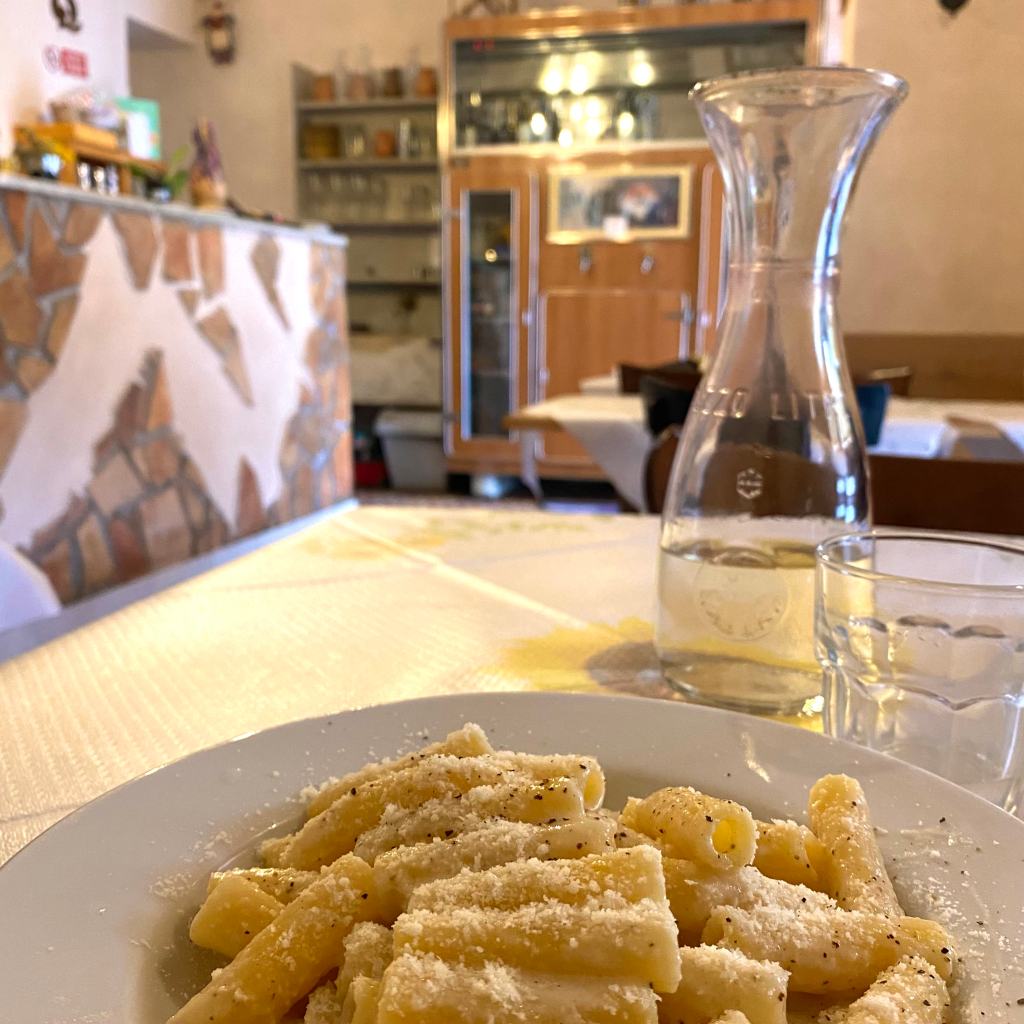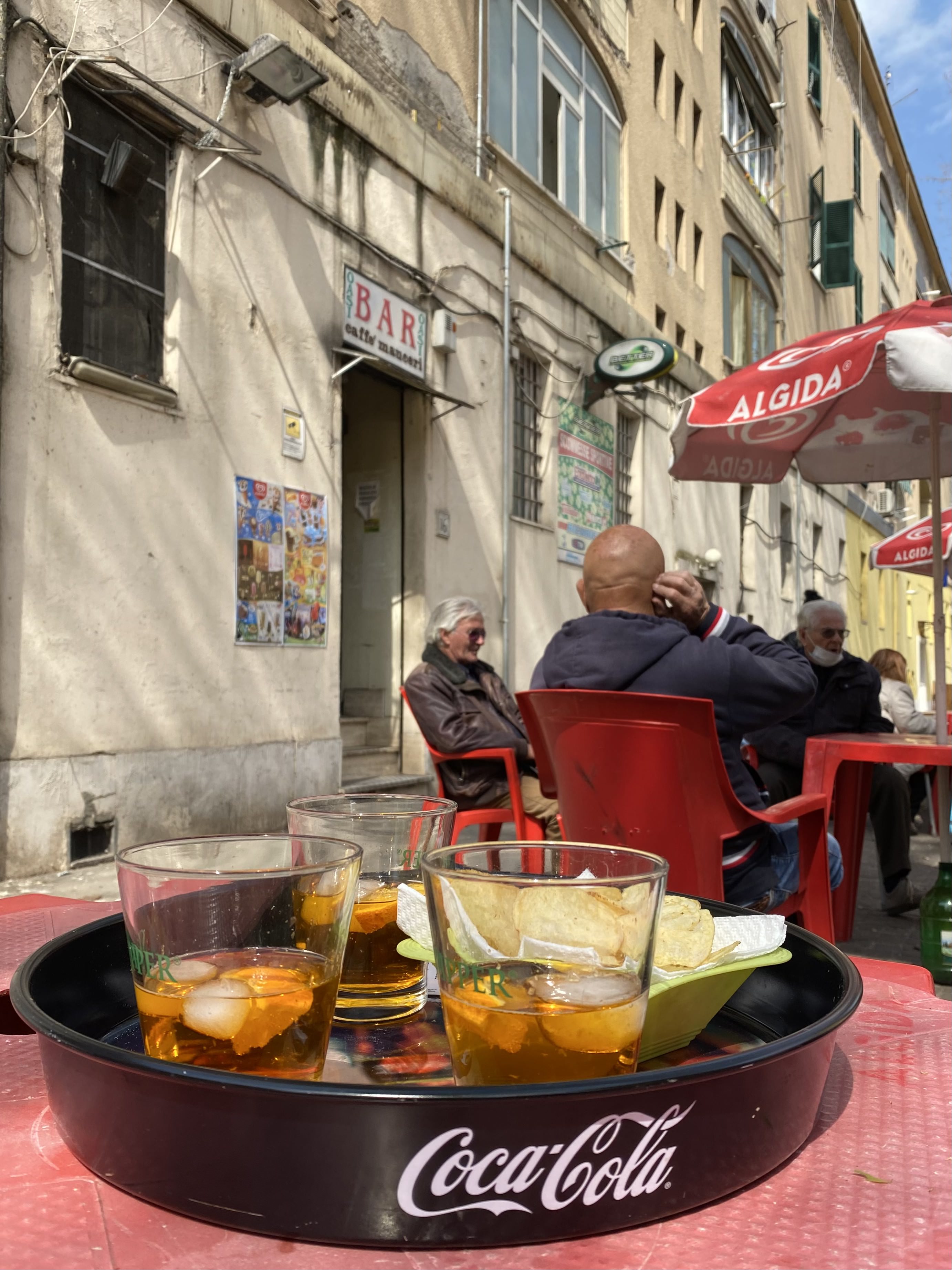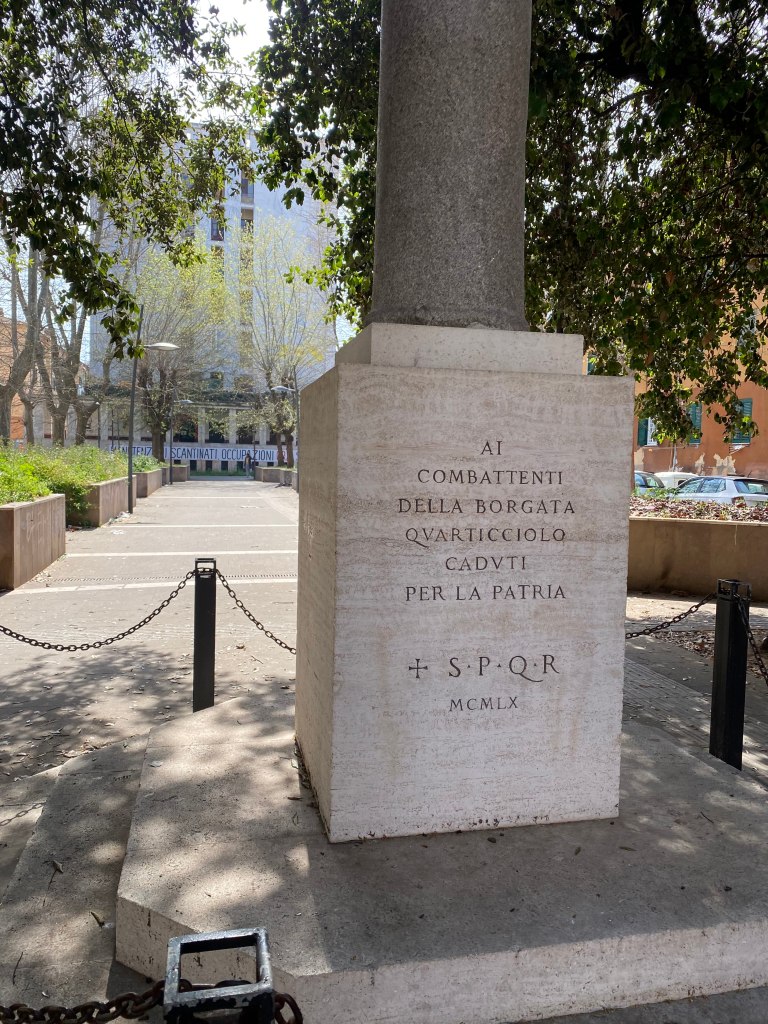Rome is a huge, huge city that hosts an incredible variety of neighborhoods, shifting and mutating from an area to another. While the center welcomes you with stunning breathtaking monuments, if you walk a little bit further and out of the walls, you are embraced by tons of diverse and curious sceneries. Quarticciolo being one of them. A Roman suburban area on the East side of the city, that gave life to my dad and to the many wonderful stories I’m about to tell you. That rough, raw but fascinating facade this neighborhood holds is the key point that perfectly describes without words the vibe of Quarticciolo and pretty much most of the suburbs in Rome. Streets are calm, people know each other, laundry is hanging literally at every corner, daily life is simple and the pure spirit of the periferia comes alive thanks to the unpretentiousness of it. My dad and I walked around for about an hour and shared fantastic little anecdotes and heartwarming stories, ending this awesome little tour with a proper Roman feast at the local (and super famous) osteria. Come with us!
We started our walk in the main piazza of the neighborhood (Piazza del Quarticciolo), admiring the provocative mural of Blu, called David & Venere, depicting the two statues wearing fancy branded clothes and high end accessories symbolizing how appearance has become an obsession, sometimes and very often turning into excess. While walking my dad would point out what was what, when he was young, referring at now closed shops that once were bakeries, delis and bars. What I saw during our exploration is that most of these places are now closed, and that the people living in the neighborhood entirely rely on the historical shops, the ones that are still open. Politics, hard times and money every so often are the elements that make it difficult for things to improve, especially in the suburbs of Rome; an on going “battle” to restore and give new light to areas that are dormant. Off and on these battles have a successful outcome, but it always takes a lot of time and hard work. In spite of, Quarticciolo is strong, definitely looks rough around the edges but still proudly shows its tough and unusual authentic Roman beauty.
The fun of this neighborhood is its labyrinthine feature, given by the many courtyards (think of Garbatella). As a matter of fact Quarticciolo is a very maze like area and you might easily get lost in between these little streets that lead from a building to another. My dad led me through all of these cortili (courtyards) with clear confidence and told me how these open outdoor spaces were helpful for families, from the stenditoi for hanging laundry to kids playing football endlessly (or at least until supper time, where dozens of mom’s voices would be heard for the ultimate dinner call). Yes, you can bet on it, my papà was one of those kids! Playing calcio on grass and asphalt, with made-up goal posts in the heart of a suburban Roma I would’ve loved to see with my own eyes.


Before lunch or dinner, the best strategy to wait for it is undoubtedly a Crodino with some chips! Papà used to go to another bar, now closed, that was on the same street of the one we went: the Oasi Bar (in the photos). Probably the most curious bar I’ve ever been to, with two entrances, one on each side of the building. They kept it as it was in the ’80s, changing very little and oh my, I love me some good old fashioned bar! The humble and simpleness of this place was exactly what I was expecting and I felt completely at home. No rush to pay, no rush to give away the table, none of it; I felt like sitting in my own garden. A group of old men talking and then slowly getting up to go lunch at home (a sacred and beloved ritual) and their chatter as a background noise complemented the painting of this very Roman landscape I love. We sat and enjoyed the sun, while looking at the old apartment’s building of my dad, right in front of it. The house my papà lived in was a “casa popolare” and the whole neighborhood was and still is structured that way. We specifically and randomly talked about when my dad and his family were going to the beach and we had so many laughs about it “prendevamo il trenino per Ostia da Piramide, con gli ombrelloni, la pasta, le fettine panate, le sdraio” (we used to take the train to Ostia from Piramide station, with our parasol, pasta, breaded cutlets, chairs) “dovevamo aspettà più di 3 ore dopo avè magnato tutta quella roba” (we needed to wait more than three hours before swimming, after having eaten all of that).
Quarticciolo has a pretty interesting history too. Officially “born” in 1939, this borgata has a riveting architecture with some buildings holding a strong austere look (some of them almost like fortresses). The first houses were given to families with more than 5 kids, and slowly to who had less. Not all the houses were available and ready to use, given the high concentration of people wanting to live in this area, so future residents started to move into apartments that still needed to be completed. In between 1943 and 1945 together with the neighborhood of Quadraro, Centocelle, Tor Pignattara and Alessandrino, Quarticciolo was the protagonist of the Resistenza against the German occupation. The main piazza reserves a memorial for those living in the neighborhood that died during the war.



Probably the most awaited part of our walk was the last one. And you can probably figure it out why: food! But let’s start from the beginning about this place, because it certainly deserves its own very presentation. Before being a full working restaurant, “Il Quagliaro” was an osteria, where people could drink wine and play cards; my dad still recalls seeing groups of old men playing loudly and vivaciously at the table in front of the kitchen. An osteria, long time ago, would offer only one dish, the special of the day, for those who were hungry in between a card game and a glass of vino. We talked about this “one dish only” kind of deal with my papà and the tradition in Rome goes like this: “Martedì pesce, mercoledì pajata, giovedì gnocchi, venerdì pesce, sabato trippa” (Tuesday fish, Wednesday pajata, Thursday gnocchi, Friday fish, Saturday tripe), every day has a specific dish and you’re probably wondering “What about Sunday and Monday?” My papà and I don’t really have an aswer for that, but my dad said “Domenica e Lunedì leggero, dopo tutto quello che hai magnato durante la settimana!” (Sunday and Monday light, after all you’ve eaten during the week). Though, the most important part is that this place brings up a lot of memories for my dad; one episode in particular where he would pop up at the door to ask for a snack and the owner would prepare supplì on the spot for him, and I can confirm that supplì here are out of this world! When we entered to consume our much deserved lunch, my papà’s eyes lit up “E’ rimasto identico!” (nothing has changed!) and seeing him so happy was such a heartwarming moment for me. The owner (still from the same family that opened it up back in the ’50s) was like a friend, he chatted with us about the “cozzaro” a street food vendor selling mussels around the neighborhood which my dad remembered vividly and overall sharing the love we have for this part of our city. A sense of home that only these places can offer. We had cacio & pepe, carbonara, supplì and their specialty: quails (quaglie), where their name comes from.
We drank the best wine coming from the vintage faucet, like it used to be, ate food that was boiling hot and absurdly fresh, walk streets filled with rough and stunning details, discovered corners exuding a unique fascine and shared stories that only a Roman papà could tell. My dad and I want to thank you for reading this and we are very glad for you to get to know and appreciate the value of this area of the city, that he proudly calls home.
© Copyright: Elisa Colarossi






This story makes me long so much to return to Rome soon. The last time I was there, just before Covid hit, my cousin, who like you lives in Centocelle (where I was born) took me and my sister for a little tour around Quarticciolo. I remember seeing Il Quagliaro and saying that on my next trip I would like to eat there, especially because I love quaglie and authentic Roman Osterie/restaurants. It saddens me that suburbs like these are neglected by the municipio and that people have to constantly fight for any assistance. I suppose this is the real Rome that tourists don’t see. You’re so right about Roman dads, my papà was also a wonderful story teller and his stories made me feel as if I knew Rome, filled me with a longing to return to see everything he spoke about and was where my love of history started.
On my last trip I also heard from my cousins, how our fathers who were quite young during the war, accidentally came across some of the resistance fighters who were hiding on the outskirts of Centocelle and they offered the boys some bread in exchange for delivering a note to someone. This happened a few times and my dad and his brothers were overjoyed to be given some food as they really had very little to eat at home. I often think about how difficult those times were and how children needed to grow up quickly in order to help their families. Thank you for sharing this story, it has brought back many memories for me.
LikeLike